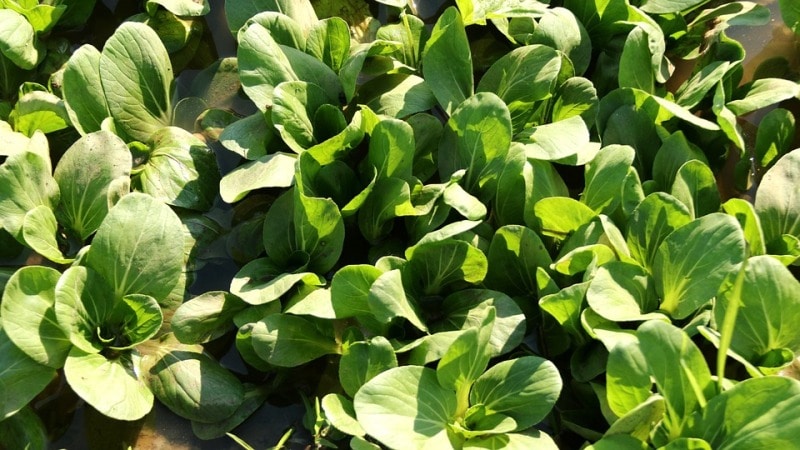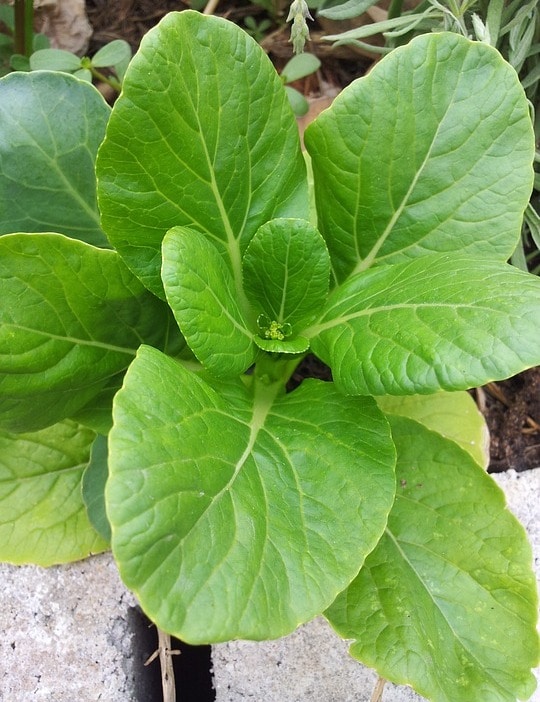Growing Bok Choy Guide
Today we learn the topic of growing bok choy techniques, tips, and ideas.
Growing Bok Choy in the Backyard
Bok Choy is the one which is used in the meals of Chinese restaurants, but recently, you can even find them growing at homes in the backyard gardens. The scientific name of Bok choy is Brassica rapa var. Chinensis. Bok choy is the one which grows very quickly and there are a number of varieties of bok choy to try growing. Bok choy is one of the types of cabbage in Chinese. Many people have questions about where is bok choy grown. Though bok choy is the plant which is mostly grown in China, these days it is also getting harvested in some parts of Canada and also California.

Read: Growing Spinach Hydroponically.
In Chinese, it is most commonly termed as “Pak Choi” which means “White Cabbage”. This is called as White cabbage because of its centers which are blanched. There are green varieties of bok choy too. The stalks of the bok choy are very crisp and the leaves are very tender and smooth with a flavor which would be in between chard and cabbage.
Bok choy is the vegetable which can be found easily in most of the grocery stores, but many of us do not know what we will be needed to do with it rather than stir-frying it. The young leaves of the bok choy will be tender and they are the ones which can be consumed when they are raw in sandwiches and salads. You can also replace it with the celery sticks. You can also make use of it in the stews and soups. There is also an option to grill it. A bok choy can also be used as a substitute for the other types of cabbages. If you want to make the bok choy head into a new plant of bok choy you can start growing bok choy from scraps.
Bok choy leaves: The plans which come from an upright head of the bok choy will have leaves which are outward flaring. The stalks which are white or green in color will look like celery which is smooth and also non-stingy.
Bok choy Flowers: Flower stalks will start growing from the middle of the bok choy plant and they will have 4 petals which are cross and yellow in color which is completely typical like cruciferous family. The stalk will shoot up to two times the plant size.
Bok choy is considered to be a biennial plant. It is not that hard to winter like all other Asian greens which have small leaves. It will be able to produce seeds quickly in the season of spring.
Growth requirements for Bok Choy:
- Bok choy has the capability to handle full sun, but it will grow to its best when placed in the partial shade. Bok choy will require about 4 to 5 hours of sunlight per day.
- The soil which you will be required for the growth of bok choy is the one which is well-drained. The soil should also be rich in the content of organic matter in it. Bok choy will need soil which has a pH level between 6 and 7.5. If possible, it is always better to choose a soil with a pH level between 6.5 to 7.0.
Varieties of Bok choy:
Though there are many numbers of varieties of bok choy, you will find the packets of seeds with no name of the varieties of bok choy on them. The bok choys which are the most popular ones in China are the small “baby” bok choys and these are the ones which are most widely found anywhere else. You will be required number of bok choys for making a recipe, but they will be grown and also reach the stage of maturity very rapidly.
Black summer:
This has to be planted at the time of autumn and you will be able to harvest it at the time of winter. This variety of bok choy will have leaves which are very dark in color.
Ching- Chiang:
These are the dwarf variety of bok choy which grow very quickly. These are the ones which would be able to handle the climatic conditions of early spring.
Mei Qing Choi:
These are also the dwarf varieties which will be grown very quickly in a very short span of just 35 days.
Joi Choi:
These are the bok choy plants which have a size which is medium. These will have very good resistance to bolt.
Win-Win:
These varieties of bok choys will have the heads which are dense and also additionally large in size. These will undergo bolting very slowly.
Canton Bok choy:
This is one of the Bok choy varieties which would be very pretty and appealing in your backyard garden. The canton bok choy has the stems which are white and also thick along with the leaves which are deep green in terms of color.
Plantation of Bok choy:

Read: How to Grow Lentils at Home.
- The bok choy can be directly sown in the soil or you can sow the bok choy seeds in the indoor locations prior to at least a month before the expected date of your last frost. The seeds will undergo the process of germination in a very quick time. They take at least a week to get germinated.
- You should never transplant the seeds until the temperatures in the night time will stay above 10°C or you will need to get prepared for covering them. If they are being exposed to the conditions of frost or if they have extended cold climatic conditions, the bok choy will assume that they are in the winter season and they will start bolting.
- The seeds of the bok choy have to be planted at a depth of a half inch at a distance of 1 inch from each other. The plants have to be consumed after they are being thinned when they reach a length of at least 2 inches. If you are growing the bok choy plants to their full size, you will be required to thin a minimum spacing of 6 inches.
- The size of the bok choy is completely dependent on the bok choy variety you are trying to grow in your backyard. Generally, baby bok choy will be at a length which is less than 10 inches and the bok choy varieties which are standard will grow up to a length of 2 feet and they spread to about 12 inches.
Care and maintenance of Bok choy:
- The plants of bok choy have to be watered in a consistent manner mainly during the autumn season. This is because drought may cause it bolting to seed. If you see that your soil is rich in terms of the organic matter, then there is no need to feed your bok choy plants. Else, you will need to make use of a fertilizer which is rich in the content of nitrogen.
- You can also go with successive planting for every two weeks to extend the time of harvest by staggering the bok choy plants or you can even plant the varieties of bok choys which have staggered dates of maturity.
- The plantation has to be stopped when you see that the climatic conditions are hot. After this, you can start the new bok choy plants for autumn in the middle of summer.
- Bok choy plants which are belonging to the family of Brassica will not undergo cross-pollination with the plants which are not their species. Seeds can be stored for about 4 years of time.
- Bok choy is the one which is generally not affected by the brassica diseases which are most common. Anyways, it is very much attracted to most of the pests such as cabbage worms and cabbage loopers. Flea beetles are the ones which can spoil the leaves of the bok choy plants. Row covers are the ones which will reduce damage from all these. Whiteflies, slugs, and aphids will also cause severe harm to the bok choy leaves.
Read: Garden Mulch Types.
Harvesting Bok choy:

Based on the variety of bok choy and the climatic conditions in which it is grown, bok choy will be ready for harvesting within 1 and a ½ month to 2 months. You will need to slice the plants for about one inch above the level of the ground and they should be able to re-sprout. The plants of the bok choy will be small in terms of size but they are the ones which are very delicious when coming to taste. Growing bok choy in greenhouse and growing bok choy hydroponic way is also possible.
Read: Rainwater Harvesting Methods.